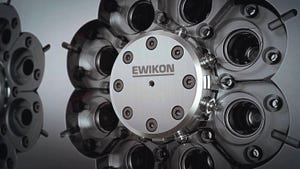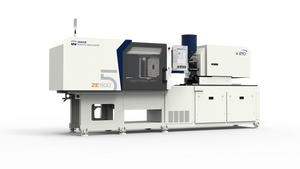May 15, 2001
Douglas M. Bryce's latest book is aimed primarily at newcomers to the injection molding industry. In the preface, the author states, ìI decided to write a source of basic, fundamental information on injection molding for those who are interested in getting a sound initial grasp of the subject.î The book is a valuable resource for students and novices, but not for experienced injection molders and molding personnel. It's also the first in Bryce's four-book Plastic Injection Molding series; subsequent titles cover the topics of material selection and product design, mold design and construction, and manufacturing startup and management.
The book contains 11 chapters. The first, Injection Molding Concepts, provides a capsule history of the injection molding industry; here Bryce also discusses future growth potential and emerging technologies.
Chapter 2 examines the injection molding machine, component by component. The section on the injection unit covers the barrel, screw and screw design, check ring, nonreturn valves, nozzle assembly, and so on. The formula for determining how much clamp is required to mold a certain size part is given with an illustrated example. Such processing parameters as temperature, pressure, time, and distance, along with a basic discussion of how to optimize them, are covered in Chapters 3 and 4; the latter chapter also provides a step-by-step procedure for setting up a mold.
Chapter 5 focuses on the role of the injection molding operator. Chapters 6 through 9 address such topics as plastics materials and the importance of proper material selection, the purpose and description of the mold and its components, auxiliary equipment (including a simple technique for determining the presence of moisture in the material), and secondary operations (ultrasonic welding, bonding, and printing).
Chapter 10, on testing and failure analysis, describes basic mechanical and thermal property tests as well as highly sophisticated tests like DSC and TGA. Chapter 11 is an illustrated guide to troubleshooting the most common plastic injection molding defects, identifying how adjustments to the machine, mold, material, and operator's practices can prevent defects. The section on rules to mold by —a list of basic guidelines— should prove very helpful to the novice molder.
To increase the versatility of this work, Bryce has included review questions in each chapter, with answers at the end of the book. Numerous figures, tables, and hand-drawn sketches are included as well; however, the audience might have been better served if the author had used standard illustrations readily available from machinery manufacturers. Also, photos of actual equipment and components are noticeably absent.
Another suggestion for the next edition would be to add more references, suggested reading for more detailed information, and perhaps an appendix listing equipment manufacturers, their addresses, and websites.
This book contains 277 pages of basic information written in easy-to-read format. Author Douglas Bryce is a 35-year veteran of the plastics industry and presently is chief consultant of Texas Plastic Technologies, a plastics engineering firm. —Reviewer: Vishu Shah, president, Consultek, Brea, CA, [email protected].
You May Also Like


